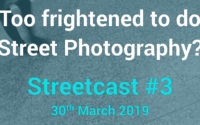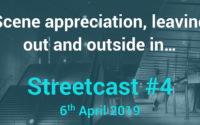“Keep or Ditch”, my thoughts. – Streetcast #2 – 26th March 2019
Street photography is a passion for storytelling and sharing. But perhaps more importantly it is a very personal expression. What the photographer sees and how they use their skill to express a moment, is their signature and style.
I would argue that telling someone to keep or ditch an image is more likely to be derived from a technical and perfectionist approach. This, I think, is neither helpful nor appropriate.
I like looking at other peoples street photography work. I am not interested in whether the image is perfectly rendered, following the rule of thirds or framed according to some bizarre swirly shape. The story is key.
A photographer has gone out of their way to see, think and render an image to share an observation. The best images are those that say something to the viewer.
Good story
I recently saw a picture of a lady at a cash register and her face showed confusion and bemusement. (Link to the video) The photograph said to me, “the cash register is broken and I have absolutely no idea what to do now other than laugh”. I asked the photographer, and that indeed was the case. The photographer shared an intimate observation and delivered the story of the moment.
If one was to look at the image as a “technical assessment” to give a judgement on “keep or ditch”, the outcome might well have a different influence on the photographer.
One could have thought, it should have been portrait because of dead space on one side or found that the bokeh was rather soft. And a conclusion of ditch would probably be the recommendation. Even with an accompanying explanation, the photographer is no longer in control as they are driven to judge their picture by the viewer’s measurement and aesthetic style.
Photographer’s Choice
In some cases the story is a moment, in others a mood or atmosphere. Either way the photographer dictates the message.
Ditch is irrelevant, especially when the image says what was intended. That the image could be visually better is down to the difficulties and opportunities of the moment. Perhaps there was less than 1 second from noticing to capturing. An observer can’t know. To ditch a moment because the viewer guesses that it should have been better represented, is very sad. Only the photographer can decide if there was a better way the moment could have been secured.
HCB told stories
Henri Cartier-Bresson has examples that illustrate the difference between story and photographic perfection. He captured the image of the boy with two champagne bottles on the street. (https://www.artsy.net/artwork/henri-cartier-bresson-rue-mouffetard-paris-1955)
In that picture the lower legs are chopped off, the image is not perfectly vertical and there is a miscellaneous part of a skirt in left of the frame. All things that mean nothing in street. The image is not for a magazine or advert. It is not setup, it is simply a real story. The pride of the young man’s face lit up, being entrusted to collect the family’s champagne… says something.
Meaningful Feedback
Feed back in street should be to let the photographer know how the image came across. If the photographer’s message was delivered, then they have “nailed it”.
If it does not then they need to see what we the observers thought the image represented. With this information a photographer can decide what they want to do about it.
Thus Keep or Ditch is a decision only the photographer can make. And this can only be done when they know what the image said by comparison to what they wanted it to say.
I think in street photography, we need to distance ourselves from measuring the purity of rendering light and composition per se and concentrate on feedback of stories and messages.
And this starts with taking the time and telling the photographer how an image came across. Then the photographer can develop their style and story telling skills as they want, not pressured into delivering the style as we want.



